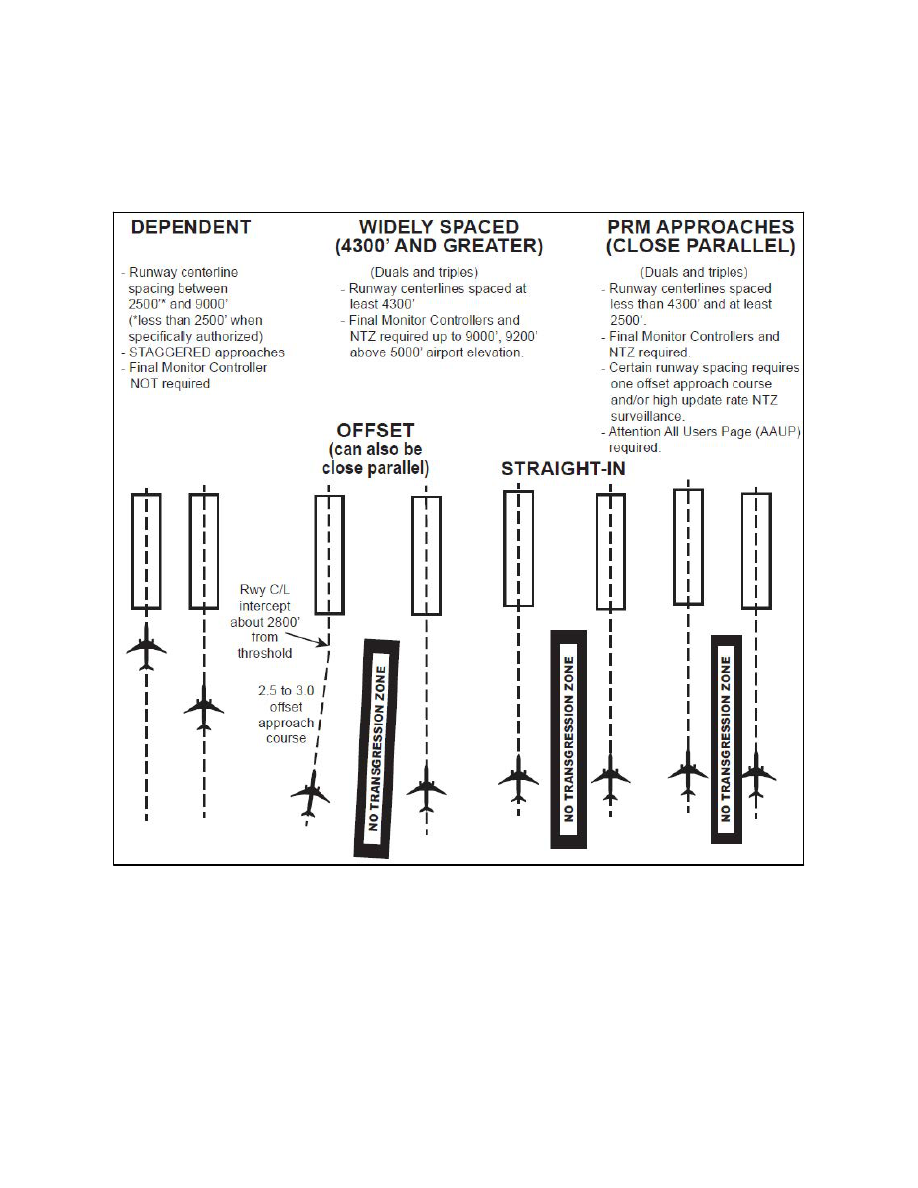
AIM
4/20/23
5
−
4
−
13. Simultaneous Approaches to Parallel Runways
FIG 5
−
4
−
20
Simultaneous Approaches
(Approach Courses Parallel and Offset between 2.5 and 3.0 degrees)
a.
ATC procedures permit ILS/RNAV/GLS instrument approach operations to dual or triple parallel runway
configurations. ILS/RNAV/GLS approaches to parallel runways are grouped into three classes: Simultaneous
Dependent Approaches; Simultaneous Independent Approaches; and Simultaneous Close Parallel PRM
Approaches. RNAV approach procedures that are approved for simultaneous operations require GPS as the
sensor for position updating. VOR/DME, DME/DME and IRU RNAV updating is not authorized. The
classification of a parallel runway approach procedure is dependent on adjacent parallel runway centerline
separation, ATC procedures, and airport ATC final approach radar monitoring and communications capabilities.
At some airports, one or more approach courses may be offset up to 3 degrees. ILS approaches with offset
localizer configurations result in loss of Category II/III capabilities and an increase in decision altitude/height
(50’).
Arrival Procedures
5
−
4
−
40